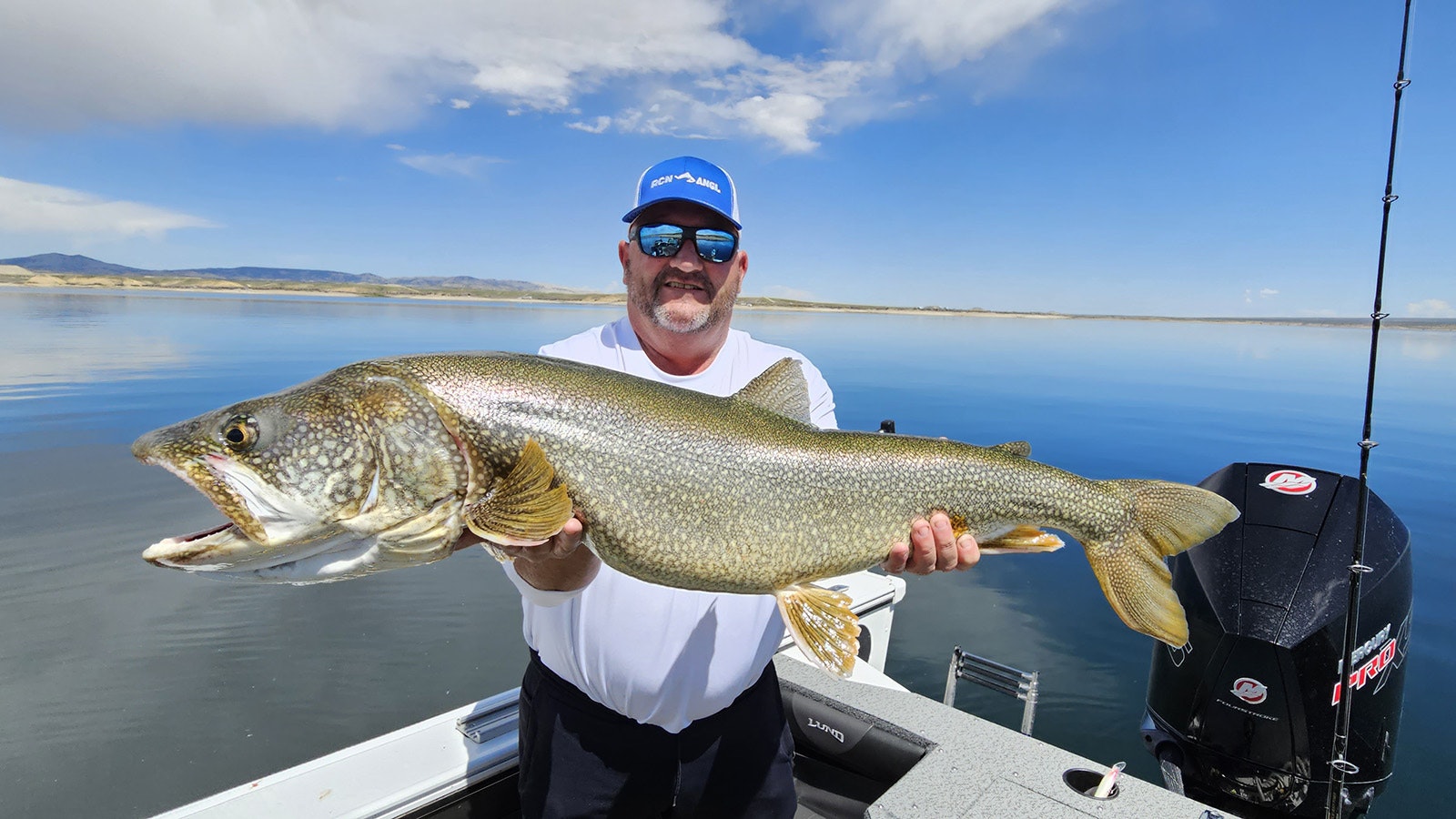Lake Trout in Flaming Gorge Reservoir have gotten so numerous they’re out-competing other fish species, and even each other, prompting Wyoming and Utah to call for no-limits and a fishing free-for-all for them.
If things go as planned, starting Oct. 1 there will be no limit on how many lake trout under 28 inches anglers can pull from the reservoir, which straddles the Wyoming-Utah state line.
The Wyoming Game and Fish Commission on Tuesday agreed to eliminate creel limits for lake trout smaller than “trophy sized” (28 inches or longer) on the Wyoming side of Flaming Gorge.
The Oct. 1 start date corresponds with the same lifting of limits on smaller lake trout that is being proposed on the Utah side.
The Utah Wildlife Board is expected to approve a no limits allowance similar to Wyoming at its September meeting, Utah Division of Wildlife Resources Coldwater Sport Fishing Coordinator Trina Hedrick told Cowboy State Daily.
The goal isn’t to get rid of lake trout entirely, said Hedrick and Game and Fish Green River Regional Fisheries Supervisor Rob Keith.
There’s been some concern among anglers that the state agencies are trying to declare an all-out war of elimination on lake trout. But those worries are rooted in misunderstanding, Keith told Cowboy State Daily.
“We’re absolutely not trying to get rid of lake trout. We’re trying to get the population reduced to where they’re more in balance with the resources in the reservoir,” he said.
The current daily possession limit for lake trout at Flaming Gorge is 12, only one of which can be over 28 inches, or trophy-sized.
Even after limits are removed for smaller lake trout, the daily limit for trophy-sized lake trout would remain at one fish per angler.
Gobbling Up Kokanee
Kokanee salmon are one of anglers’ favorite species at Flaming Gorge. And lake trout like to eat them.
So, part of the reason for wanting the lake trout fished down is to help the kokanee bounce back.
But what’s more, an over-abundance of smaller lake trout gobbling up the kokanee is also making it harder for the lake trout themselves to grow into bigger, fatter, trophies.
Population surveys of Flaming Gorge’s lake trout in the 1980s estimated there were about 43,000 in 1982 and 50,000 in 1988.
A 2023 count indicated an estimated lake trout population of 143,000, Keith said.
Basically, that’s translated into more numerous, but smaller lake trout. There’s too many of them competing for kokanee and other food sources, he said.
As fish go, lake trout are long-lived and they are prolific spawners, Hedrick said. That’s likely why their numbers have ballooned at Flaming Gorge and elsewhere across the West.
They can also go for remarkably long periods without eating, she said. Lake trout surveys on the Utah side turned up lots of “skinny” fish with little to no food in their stomachs.
“We’ve got this bottleneck of lake trout in the smaller size,” Hedrick said. “We’re starting to see a decline in the trophy-sized fish, but those are an important part of the fishery there.”
Wider Concerns
Lifting the limits on smaller lake trout will essentially make them a “non-game fish,” Game and Fish Fisheries Management Coordinator Mark Smith told the commission on Tuesday.
There are region-wide concerns over booming lake trout populations, and diminishing kokanee, he said.
While the decline of kokanee across the region isn’t only because of lake trout gorging on them, it’s definitely a contributing factor, he said.
While the aim is to whittle down the lake trout population in Flaming Gorge, Game and Fish won’t require anglers to keep or kill any of the smaller ones that they catch, Smith added.
Even so, it’s hoped people will keep the fish they catch, and fire up their grills at home, Hedrick said.
“What we’re trying to do is get the word out and let everyone know that it’s OK to harvest these fish,” she said.
Mark Heinz can be reached at Mark@CowboyStateDaily.com





